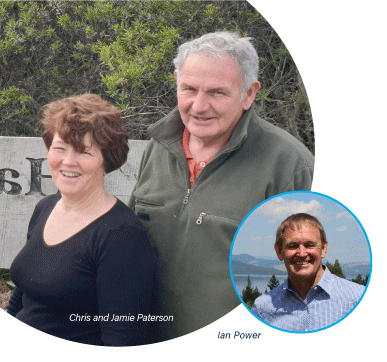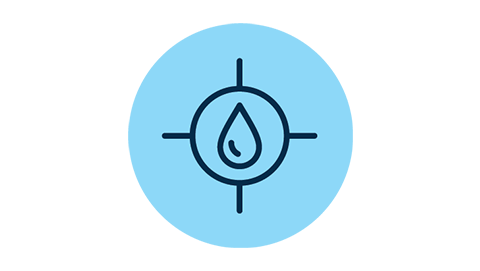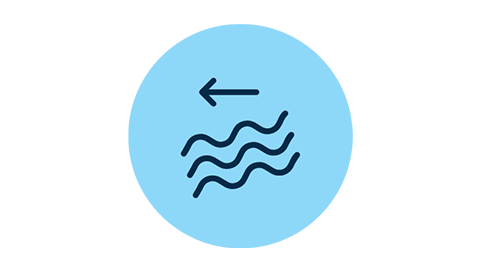
How can detention bunds improve water quality?
Chris and Jamie Paterson run 275 dairy cows on 110 hectares in Rotorua. They chat to Ballance Environmental Management Specialist Ian Power about how a detainment bund has improved water quality on their farm near Lake Rotorua.
What are detainment bunds and how can they help improve water quality?
“Essentially our bund is a low wall built across a valley floor to temporarily intercept overland waterflow during heavy rain. In some ways it’s like a dam, but it’s designed to temporarily pond over our pasture and then quietly seep away without destroying the pasture in the ponding area. Our bund can fill up in a matter of hours during a storm event – you’ve got a hectare of water that just appears in a few hours. It’s quite something to see! It releases through infiltration into the free-draining soil under the ponding area. If there’s any remainder after three days of ponding, we simply pull the plug to protect pasture quality in the ponding area.”
And the phosphorus is trapped too?
“That’s right – we were part of a Sustainable Farming Fund research project that showed up to 60% of the phosphate in the water gets trapped as sediment particles settle in the bund. Then it slowly flows back onto the pasture rather than into the lake. It’s not a huge amount of P in relation to the farm, but in relation to what would have been going into the lake, it’s quite high. If there were more of these bunds in the lake catchment, it would be a simple and cost-effective way of preventing phosphorus getting into the lake. Our kids play in the lake. Our grandkids play in the lake. So why wouldn’t we do as much as we can to improve the water quality that’s coming through?”
What were the steps to building the bund?
“We had all of our farm’s stormwater flow paths mapped out by GIS expertise at the Regional Council. This included a number of possible bund sites where good storage could be achieved relative to the size of the various sub-catchments on our farm. We chose the site option that suited us best. Then an engineer gave advice on a construction method and compaction requirements. We were fortunate that where we built had a big rhyolite ridge, so it was simple to make the structure and put the soil back on top. The neighbours came with a digger and we got the job done in about two days.”
What would you say to other farmers who are considering building a bund?
“There are equations to work out the area and volume of water that can be held at each possible site to get the full potential from your bund - so you definitely need professional GIS advice. Done right, you will achieve good capture in your bund with minor risk of failure.”
How do detainment bunds fit into your FEP?
“As farmers are working together on catchment plans and establishing riparian margins, detainment bunds fit really well within that long term planning. We know in pumice soils we can get at least 50% reduction in P loss, and we know there must be an N reduction, too. Detainment bunds also reduce erosion, retain nutrients on farm, they help to recharge aquifers. There’s a whole lot of on-farm benefits, and we’ve been fortunate to be part of some of the research studies that are proving it. The more evidence we can gather, the bigger role these innovations will have in our next FEP.”
What excites you about the future of farming in New Zealand?
“Agriculture in New Zealand has evolved a long way, and with the help of organisations like Ballance and DairyNZ, our knowledge base has improved tremendously – and so has our productivity. It’s only through improved knowledge that we’re understanding the full effects of our farming practices of the past. Science is a big asset in sustainability. Innovative ideas are coming through, and they’re all coming from science. No one wants to harm our environment – and we’re all working together now and spending a lot of time and energy to make sure we have that knowledge.”
Download the full PDF here





